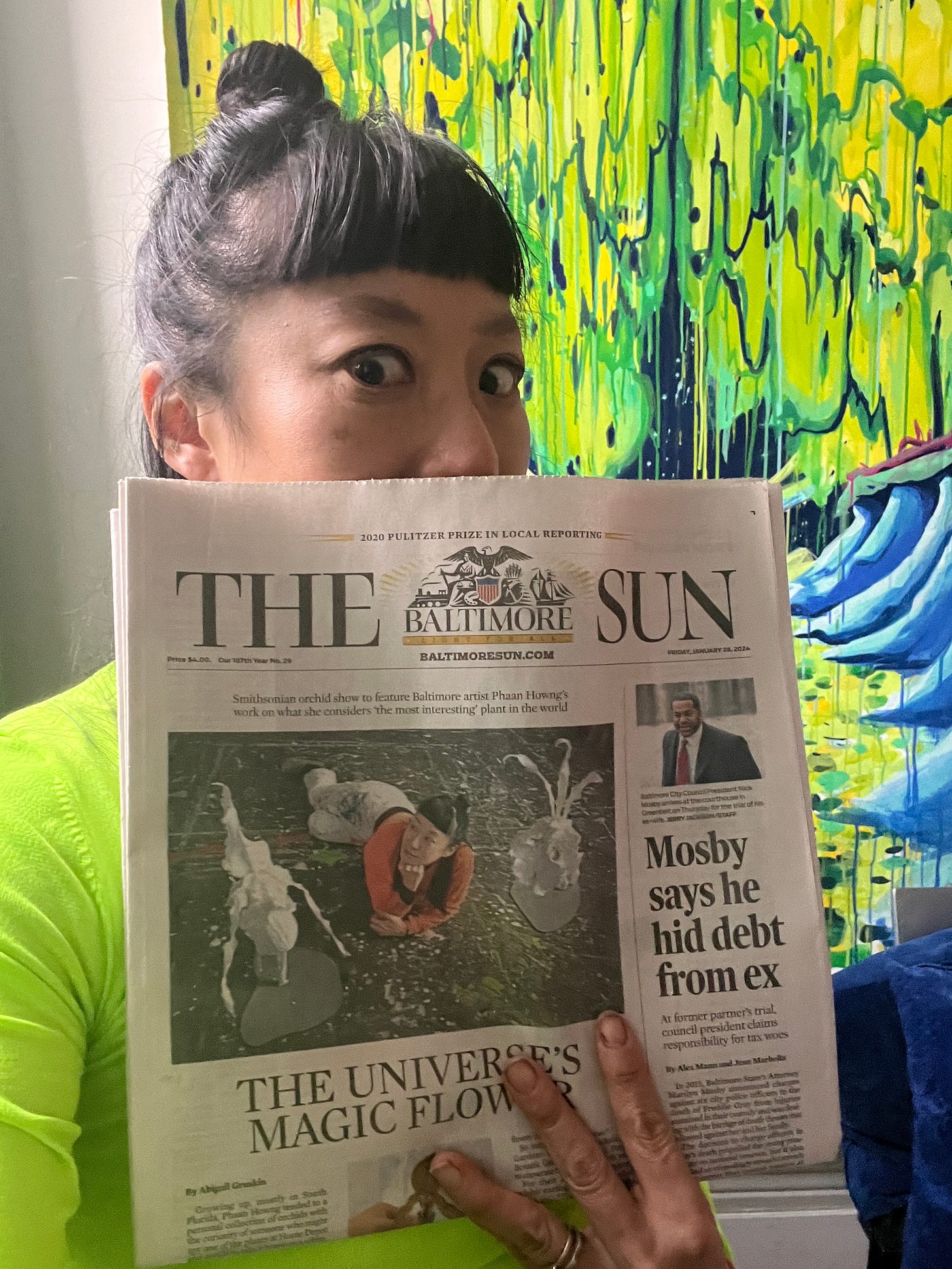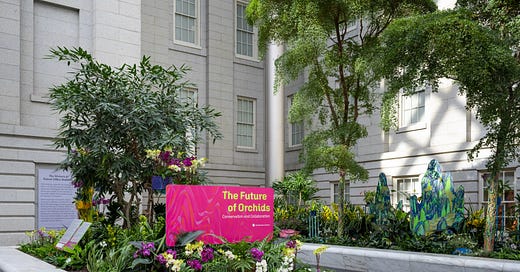Phaan Howng x Smithsonian Gardens: The Future of Orchids On View
THE FUTURE OF ORCHIDS: Conservation and Collaboration @ National Portrait Gallery and Smithsonian American Art Museum, opened Janurary 26th and is on view until April 28, 2024.
The 28th Annual Smithsonian Gardens Orchid Exhibition- The Future of Orchids: Conservation & Collaboration
The Future of Orchids: Conservation and Collaboration is the 28th Smithsonian Gardens and the United States Botanic Garden orchid exhibition which opened to the public on Jan. 27, 2024 and will be on view through April 28, 2024. The entire Kogod Courtyard of the Smithsonian American Art Museum and National Portrait Gallery is filled with around 350 live orchids and features a series of newly commissioned and loaned works by ME! (Woo hoo!!) to help audiences visualize the future of orchids and be inspired to take action toward a sustainable future.
Centered around the themes of the future of orchids and orchid conservation, the exhibition explores the numerous challenges facing wild orchids today, including climate change, habitat destruction and over-collecting, and offer a glimpse into the work being performed today by a diverse group of scientists and conservationists to protect the future of orchids.
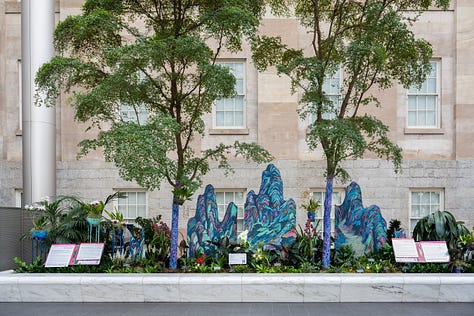
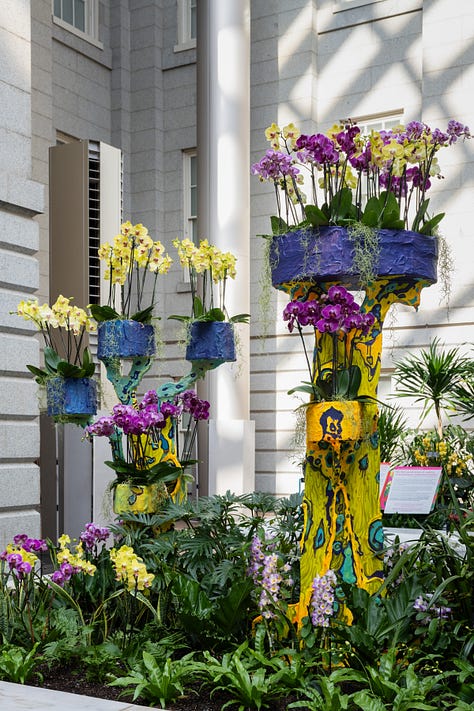


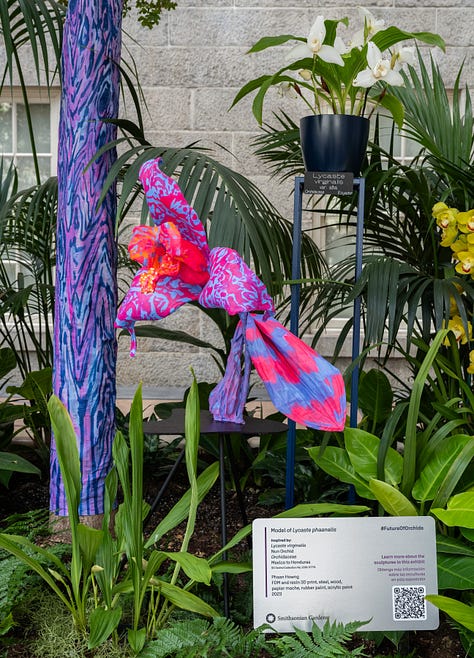
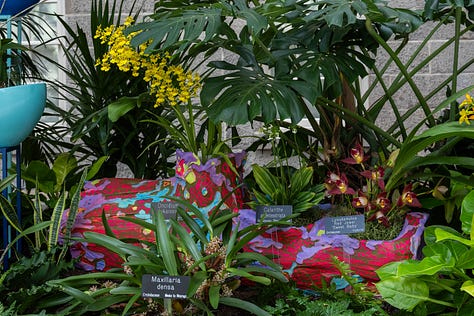
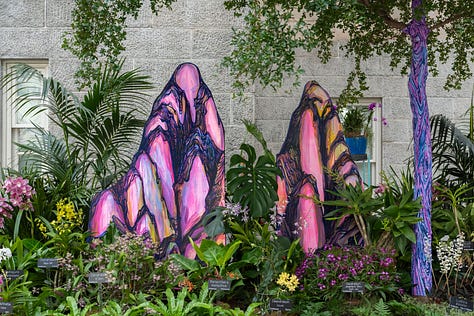
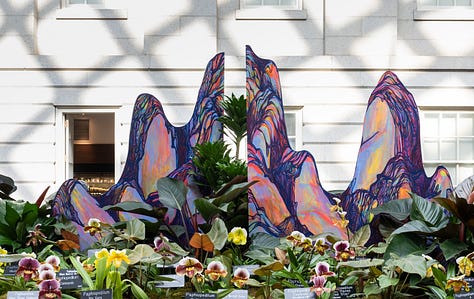
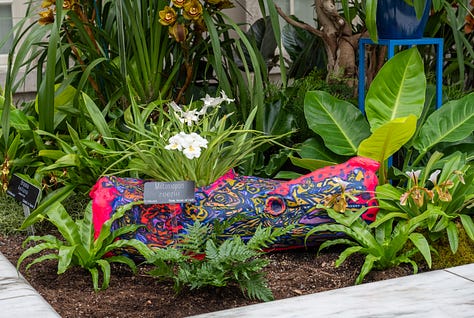
Artworks featured include a series of newly commissioned paintings to wrap the existing trees in each bed, cachepots, and larger than life 3-D printed orchid sculptures taken from scans created by the Smithsonian Digitization Program Office. I titled the overall installation “The Orchids’ Fungi Garden Paradise” to tie all the artwork elements together, but especially to highlight how specific mycorrhizal fungi are extremely important to orchids for their survival. I was also happy to reappropriate The Mountains from my 2021 exhibition A Bag Of Rocks For A Bag of Rice at the Asian Arts and Culture Center to create a sense of the geographic environments that wild orchids grow in.
All the information I learned from the Smithsonian Gardens team about orchids, especially from their lead horticulturalist, Justin Kondrat, while he toured me through their massive orchid greenhouse, played a vital role in manifesting the artwork. Additional research about mycorrhizal fungi, herbariums, orchid poaching and trafficking (and more!) also played an influential part.
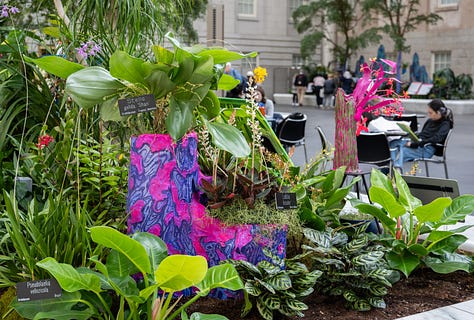
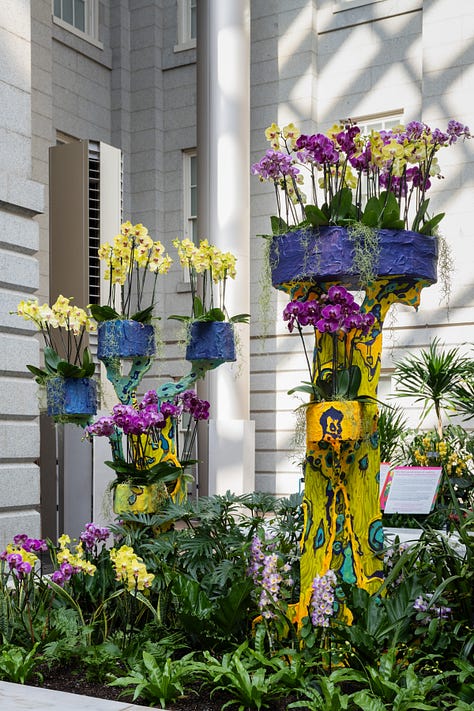
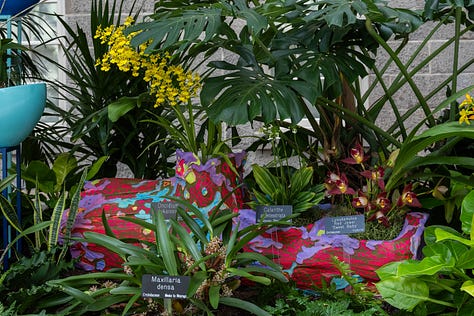
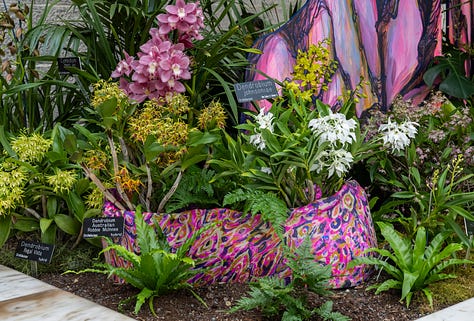
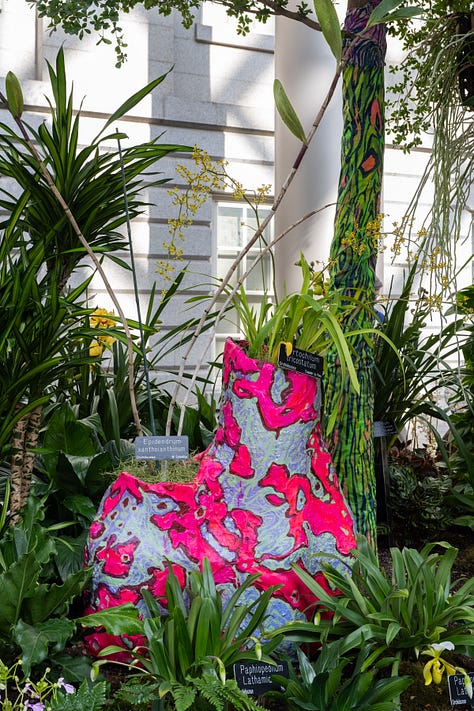
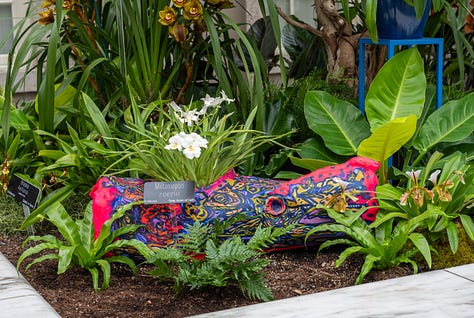
The cachepots held live orchids from their collection and represented the different natural substrates that orchids can grow on in the wild-such as rocks (lithophytic orchids), live trees (epiphytic orchids), and decaying logs. There are also orchids that grow in the ground (terrestrial orchids) but left that out since those can just literally be planted in the flower bed directly. ;-)
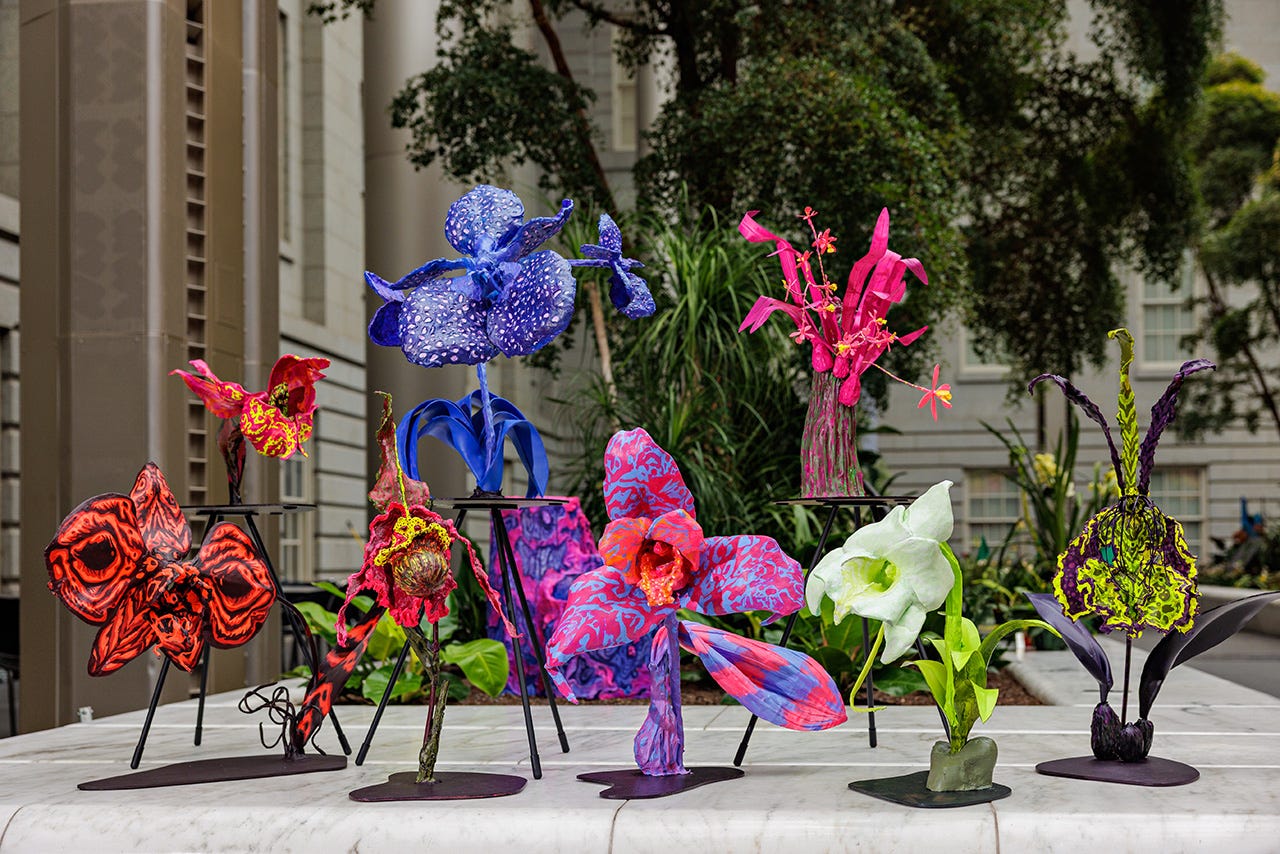
The 3-D printed orchid sculptures were the most creative fun (and not fun) to make. It was the first time I have used 3-D printing to create sculptures. The not fun part was waiting for them to be printed, but mostly figuring out how to NOT make them look as if they were 3-D printed. The scale of the sculptures were inspired from seeing Robert Brendel botanical models for the first time from a trip to the Oak Spring Garden Foundation library. I also got to see more up close at the Smithsonian American Museum of Art behind the scenes from (out of all places) their medical collection. The Brendel models were large scale botanical models created to teach plant anatomy in the late 1800’s to 1920’s. They were first manufactured in Germany by Robert Brendel primarily using PAPER MACHE, and then hand painted(!!!!!) which I thought was so fascinating. They can even be taken apart as if you are dissecting them. Anyway, I can go on about how amazing they are, but here is a link to a really good paper for you to learn more: Save the Plants: Conservation of Brendel Anatomical Botany Models.
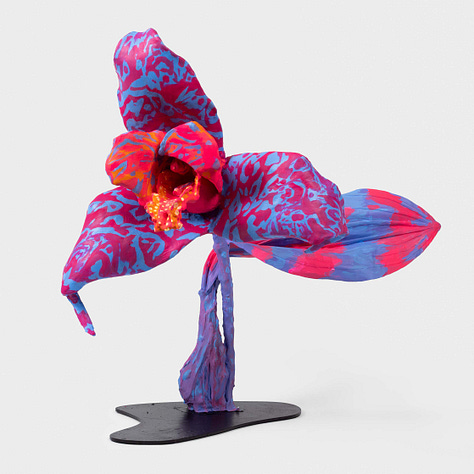

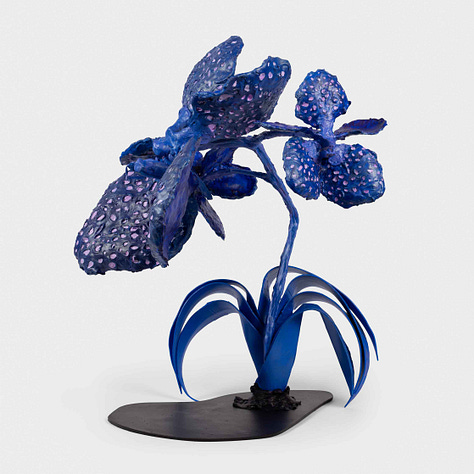
See all the models and images from the exhibition here at the Future of Orchid’s Website!
And…
